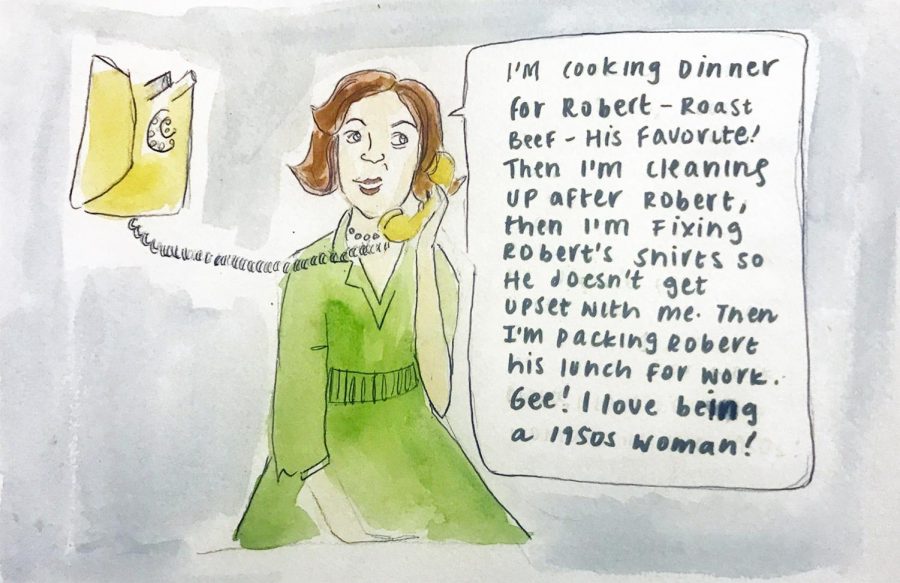Take the rose-colored glasses off the 1950s
December 6, 2018
Ah, young love.
I often hear people complain that they were “born in the wrong generation” and long for something more than our “swipe left, swipe right culture.”
The truth is that in 2018, romance is better than ever.
If you look closely, movies like “Grease” paint a pretty picture of romance with their lovey-dovey drive-in dates, prolonged summer flings and songs of hopeless devotion.
Be careful what you wish for if you think you’d be better suited for an old-fashioned romance.
In 2018, American women are more liberated than ever.
Therefore, the implications of love and romance have been adjusted and updated; the sweet and chivalrous ’50s way is outdated, not timeless.
The percentage of women who attend college rose from 5 percent to 35 percent from 1950 to 2017, according to a December 2017 article by Statistica.
This is accompanied by a 17 percent workforce increase from 29 percent to 46, according to a 2000 study by the Bureau of Labor Statistics, and an increase in average age of marriage from 20 to 28 years old, according to a 2018 article by the Spruce.
Women now aspire to more than what good old-fashioned love had to offer.
Without the social obligation of marriage and the sacrifices that respectively came with being someone’s wife, being particularly smitten with someone no longer means sacrificing your own autonomy, education and other opportunities.
Let’s be real, romance is so much better, especially when it doesn’t confine you to a kitchen.
The sexual liberation of women has been increasing since the last century.
The first oral contraceptive pill was introduced in the 1960s, went through legalization in the 1970s, and now there’s a myriad of accessible options available to choose from.
Today, sexual freedom in the U.S. is at an all-time high.
Ninety-nine percent of sexually active women today have reported using some form of birth control, compared to virtually zero percent 60 years prior, according to a 2018 Guttmacher article.
One of the best parts about love in 2018 is its inclusivity.
Romanticizing the past would also be romanticizing a time with laws against who you could marry.
If we were to idealize our old-fashioned ways, we would be forgetting so much about what love in the U.S. actually looks like.
Since its legalization in 1967, interracial newlyweds have increased by 17 percent in 2015 according to a 2017 report by NPR, and since the Supreme Court decision for Obergefell v. Hodges in 2015, 10.2 percent of LGBT adults have chosen to marry their partner, according to a 2017 Gallup poll.
We are in an age where the genders, races, socioeconomics, etc. that constitute relationships are more diverse than ever before.
And that is the age of love.








